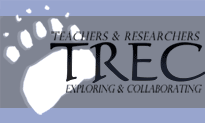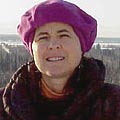 |
|
|
| Author |
Message |
Kayt_Sunwood

Joined: 23 Mar 2004
Posts: 12
Location: Beyond Ester, Alaska

|
 Posted:
Tue Jun 08, 2004 8:53 pm Posted:
Tue Jun 08, 2004 8:53 pm |
  |
Science Activity Portals Learning Resources/Examples
Learning objects are the core concept in an approach to learning in which content is broken down into "bite size" chunks. Chunks can be reused, independently created and recreated, maintained, pulled apart, and stuck together somewhat like Legos.
For examples of exemplary learning objects, activities and/or resources from which to gather learning objects and activities for use in your classroom or for learning activities at home, check out the annotated list of sites and resources below. If you know of other great resources, send the URLs and information about the resources to sunwood@arcus.org to share additional resources that we might add to the list.
Atmospheric Visualization Collection
http://avc.comm.nsdlib.org/cgi-bin/wiki.pl
The intended use of this web page is for collaborative development of lesson plans. Several atmospheric science lesson plans and visualizations are available. Many of the visualizations are interactive, so the user may vary the conditions and observe the results. These applets serve as useful introductions to the concept of modeling.
Center for Improved Engineering and Science Education (CIESE)
http://www.k12science.org/
This site links to the many classroom projects, national and regional programs and professional development workshops offered or sponsored by CIESE. Projects focus on utilization of realtime data available from the internet, and collaborative projects that utilize the internet's potential to reach peers and experts around the world.
Discover Our Earth
http://atlas.geo.cornell.edu/education/index.html
Provides interactive data analysis and mapping tools accompanied by data sets, images, graphs, maps, and movies. There are two mapping tools that can be used to create user-directed, GIS-based maps that can be useful in a wide range of earth science topics, such as plate tectonics, geophysics, sea level change and geography. In addition to the software tools, there are guided exercises, curriculum materials, and a teacher's guide.
Earth-Moon-Sun Dynamics
http://www.wcer.wisc.edu/ncisla/muse/earth-moon-sun/index.html
Extensive website hosting an Earth-Moon-Sun Dynamics (EMS) model and curricula to help students understand and interpret the natural phenomena associated with moon phases, lunar and solar eclipses, and seasonal fluctuations in day length. Aligned with National Science Content Standards and Benchmarks for Scientific Literacy. Lesson plans, teaching strategies, an introduction to using models, models, and assessments, as well as research on the EMS model are available at this Modeling for Understanding in Science Education site.
Earth Exploration Toolbook EET
http://serc.carleton.edu/eet/chapters.html
A collection of earth science datasets and scientific tools with educational applications. Arranged in chapters each presenting datasets needed for the exercise, the analysis or visualization tools, and step-by-step instructions.
OPPORTUNITY FOR USERS OF THE EET
The Earth Exploration Toolbook (EET) seeks science or technology teachers in grades 6 to 12 to field test online materials with students. Teachers will receive a $250 stipend for their participation.
Event-Based Science
http://www.mcps.k12.md.us/departments/eventscience/index.html
Award winning standards based program that uses newsworthy events to establish the relevance of science topics. Data is gathered from interviews, photographs, web pages, and inquiry-based science activities.
Signals of Spring
http://www.signalsofspring.net/index.cfm
This is a web-based professional development package that provides training for teachers. The site contains integrated science curricular materials including data interpretation and applications for teachers and students.
The Earth System
http://www.ldeo.columbia.edu/edu/dees/ees/
Hosted by the Department of Earth and Environmental Sciences at Columbia University, this site contains a variety of large data sets designed to help students learn about the Earth's system through data exploration. The data sets are grouped by topics and include atmospheric, oceanographic, paleoclimatic and geologic data.
WISE - The Web-Based Inquiry Science Environment
http://wise.berkeley.edu/welcome.php
A free on-line science learning environment for students in grades 4-12. Students learn about and respond to contemporary scientific controversies through designing, debating, and critiquing solutions, all via the internet. Curriculum projects are complete and ready to use in the classroom.
Field Tested Learning Assessment Guide
http://www.flaguide.org/
Wealth of materials, tools, and information: an assessment primer, collaborative learning theory and methods, self-contained modular classroom assessment techniques (CATs), and tools for science, technology, engineering, and math instructors interested in researched and tested approaches to evaluating student learning, attitudes and performance.
* PBS Scientific American Frontiers Television Series, Teachers Guides, Activities, Archive of Programs for Online Viewing
http://www.pbs.org/saf/educators.htm
Award winning series of science specials hosted by Alan Alda airing on PBS. Teachers guides and print outs of activities to go with the programs are available at the above address. An archive of programs available for viewing online is available at:
http://www.pbs.org/saf/archive.htm
Of special interest for Arctic science topics are:
*The Forever Wild episode (Program # 1304), particularly the The Second Earth segment of Forever Wild that aired initially in November of 2002. This program is available for online viewing from the archive:
http://www.pbs.org/saf/archive.htm
Student activity printouts and resources are available from the educator site at
http://www.pbs.org/saf/educators.htm
* Hot Times in Alaska Premieres June 15, 2004
Current scientific consensus is that the steady warming trend seen in the global climate is caused by people, largely a consequence of the emissions from fossil fuels that have been burned in ever increasing quantities since the industrial revolution. The effects of this warming trend -- sea level rise, shifting weather patterns, and ecological change are showing up first in the coldest environments, the polar and sub-polar regions. This program will explore the extensive changes in the physical and natural environments that are now becoming evident in Alaska, and will take advantage of the many Alaska-based scientists who have active research projects on warming trends and consequences. Subject areas to be explored include: changing patterns of rain and snowfall; shrinking glaciers; melting permafrost; increasing forest pests; disruption of wildlife.
* National Snow and Ice Data Center
http://nsidc.org/cryosphere/
Cold Facts on the Earths Snow, Ice and Frozen Soil Facts and links to educational materials and resources.
http://nsidc.org/data/arcss122.html
Interactive CD-ROM
"When the Weather is Uggianaqtuq: Inuit Observations of Environmental Change"
Author: Shari Fox
Published By:
National Snow and Ice Data Center (NSIDC)
Arctic System Science (ARCSS) Data Coordination Center
To read more about the project or to order a copy of the CD-ROM (free of charge), please go to:
http://nsidc.org/data/arcss122.html
or e-mail the National Snow and Ice Data Center at:
nsidc@nsidc.org
-------------------------------------
CD-ROM SUMMARY
Uggianaqtuq (pronounced OOG-gi-a-nak-took) is a North Baffin Inuktitut word that means to behave unexpectedly, or in an unfamiliar way. From the perspective of many Inuit in the Arctic, the weather has been uggianaqtuq in recent years. In this interactive, multi-media CD-ROM, Inuit from two communities in Nunavut, Canada (Baker Lake and Clyde River), share their observations and perspectives on recent environmental changes. Maps, text, photos, video, and music are integrated to help illustrate the changes Inuit have observed in their environment and the impacts on their livelihoods.
The CD-ROM is a pilot project into using media technology, as opposed to written reports, as an alternative way to document and communicate Inuit observations and knowledge. It is both an exploration into designing more creative and useful reporting to communities involved in research, as well as an educational tool for students, researchers, and decision-makers in Nunavut and beyond who are interested in how Inuit are experiencing environmental change. Topics on the CD-ROM were identified through community interviews and focus groups and include snow, sea ice, wind, weather variability, changes in seasons, animals, glaciers, and more. The CD-ROM also focuses on the individual knowledge-holders and through their images and words observations are shared and explained.
The integrated components of the CD-ROM allow users to:
- Search by topic or the person being interviewed
- View interview clips in Inuktitut with English interpretations
- View and print maps about environmental changes drawn by participants
- View short videos with scenes from the communities
- View summaries and photos of environmental changes and their impacts to the landscape and community life
The CD-ROM should appeal to students, educators, researchers, and decision-makers in Nunavut and elsewhere who have an interest in the Arctic, Inuit, and indigenous observations and experiences of recent climate and environmental changes.
* The Geoscience Laser Altimeter System (GLAS)
http://nsidc.org/daac/icesat/index.html
The Geoscience Laser Altimeter System (GLAS) is the sole instrument on the Ice, Cloud, and land Elevation Satellite (ICESat). The main objective of the ICESat mission is to measure ice sheet elevations and changes in elevation through time. Secondary objectives include measurement of cloud and aerosol height profiles, land elevation and vegetation cover, and sea ice thickness. ICESat will enable scientists to study the Earth's climate and, ultimately, predict how ice sheets and sea level will respond to future climate change. Links to realtime data and images.
ICESat has a near circular and near polar orbit with an altitude of approximately 600 km and global coverage to 86 degrees latitude. The ground track will repeat every eight days during the first 120 days following launch, to provide multiple overflights of ground verification and validation sites. The primary mission will use a 183-day repeat track.
The National Snow and Ice Data Center (NSIDC) archived digital data which is downloadable at:
http://nsidc.org/data/icesat/data.html
Track ICESat's real-time orbital location
(University of Texas ICESat/GLAS site)
http://www.csr.utexas.edu/glas/groundtrack/
* Visit the University of Wisconsin Web site for a streaming video (AVI format) of an ICESat overpass, 13 October 2003.
http://lidar.ssec.wisc.edu/syst/ahsrl/gallery.htm
Visit the University of Wisconsin Lidar Group Index page for explanations of the Volume Imaging Lidar System designed for long term observations in the Arctic.
http://lidar.ssec.wisc.edu/index.htm
****Social Sciences/Across the Curriculum Resources****
Arctic Circle
http://arcticcircle.uconn.edu/
Series of resources comparing the environmental, social, and cultural impact of large scale natural resource development in various regions of the North.
http://arcticcircle.uconn.edu/NatResources/
Sustainability, Economic Development, Resource Management, the Global Economy
http://arcticcircle.uconn.edu/HistoryCulture/
Exploring the past, Colonization, Euro-American Portrayals, Indigenous Response, Ethnographic Portraits
http://arcticcircle.uconn.edu/SEEJ/
Struggle over Land Claims, Self-Determination, Resource Utilization, Cultural Identity
http://arcticcircle.uconn.edu/Museum/
Art, Photography, and Anthropology
http://arcticcircle.uconn.edu/VirtualClassroom/
Syllabus, Overview, Case Studies |
_________________
M. Kayt Sunwood
Researcher & Educator
ksunwood@alaska.net |
|
     |
 |
|
|
|
View next topic
View previous topic
You cannot post new topics in this forum
You cannot reply to topics in this forum
You cannot edit your posts in this forum
You cannot delete your posts in this forum
You cannot vote in polls in this forum
You cannot attach files in this forum
You can download files in this forum
|
Powered by phpBB 2.0.11
© 2001, 2002 phpBB Group :: FI Theme ::
All times are GMT
| |
